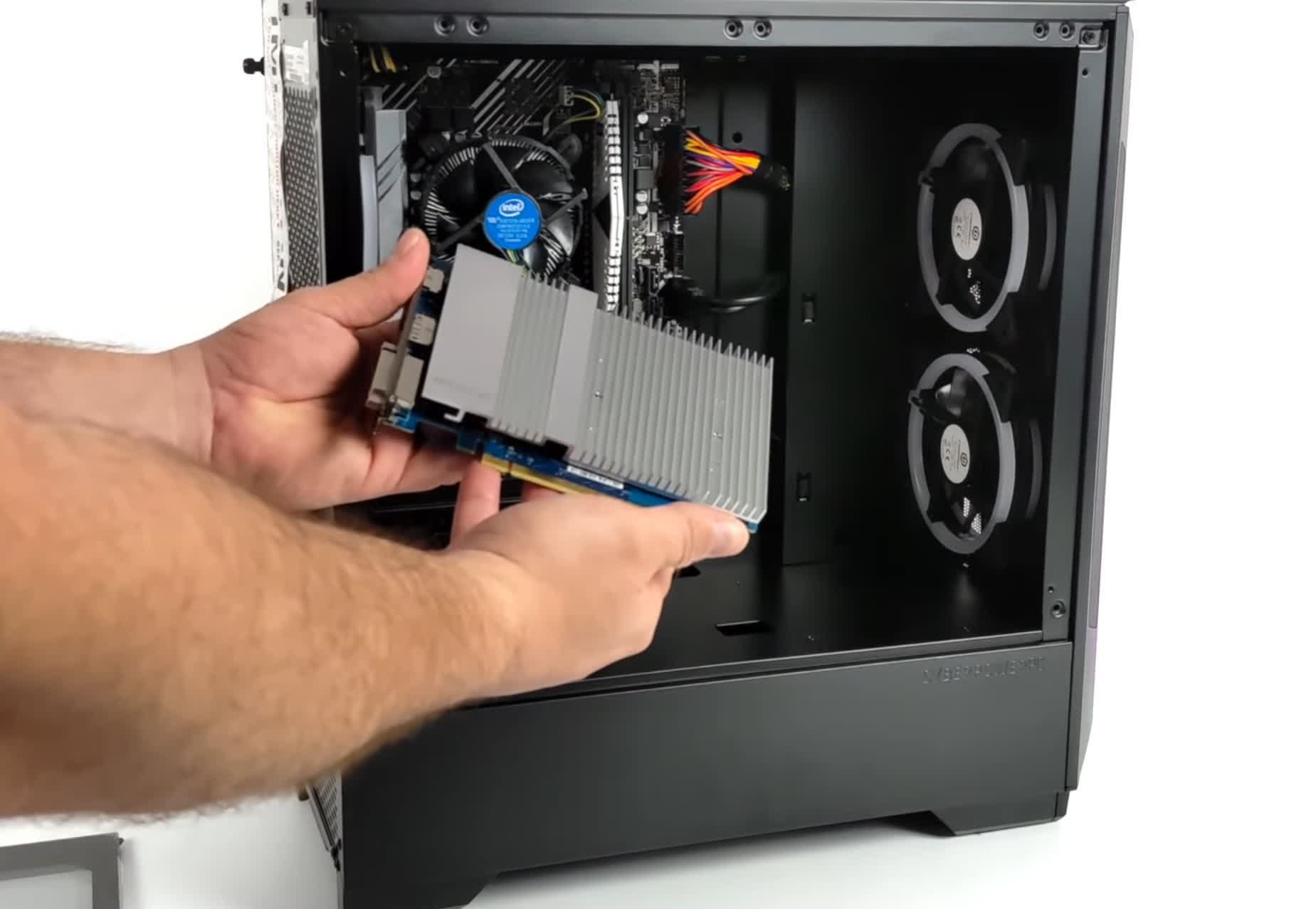In a nutshell: We already knew that Intel’s Xe DG1 graphics card isn’t going to be competing with the latest and greatest from Nvidia and AMD, but a new review shows it has potential as a budget 1080p option.
The first benchmark of the Intel Xe DG1 graphics card appeared on the Basemark GPU database back in April. The result suggested it offered performance inferior to the Polaris-based Radeon RX 550 released back in 2017, which isn’t great.
However, YouTube channel ETA PRIME managed to get its hands on a DG1 via a prebuilt, $749.99 CyberPowerPC gaming system that includes an Asus DG1-4G. It was tested across a range of games, giving us a better idea of the capabilities.
The card’s specs come in at 80 execution units (EUs) or 640 shading units, 4GB of LPDDR4X-4266 across a 128-bit interface, a 1,500 MHz boost clock speed, and it runs at just 30W, meaning external PCIe power connectors are not required and it can be passively cooled.
The PC comes with a single stick of 8GB DDR4-3000 memory, which ETA PRIME swapped out for dual-channel 16GB DDR4-3600 to give a bit of a performance uplift. Interestingly, it also features a Core i5-11400F, despite Intel previously saying the GPU could only be paired with 9th-Gen (Coffee Lake) and 10th-Gen (Comet Lake) processors. It appears that Rocket Lake has been added to the compatibility list.
The gaming benchmarks show the Xe DG1 can handle most games at 1080p pretty well when the graphics are set to normal or low. GTA V gets between 79 – 92 fps at standard settings, Forza 4 averages over 60fps (low), and Genshin Impact is around 60fps (medium). As you might imagine, some demanding games do struggle: Cyberpunk 2077 can only manage 30fps when at 720p with low settings, while Red Dead Redemption 2 gets between 32 – 47 fps at 900p with settings downgraded to low.
Xe-HPG (DG2) real candy - very productive time at the Folsom lab couple of weeks ago. “From jittery journeys to buttery smooth” said @rogerdchandler -
— Raja Koduri (@Rajaontheedge) June 2, 2021
lots of game and driver optimization work ahead for @gfxlisa’s software team. They are all very excited..and a little scared:) pic.twitter.com/tQcfEWf8p4
While the Xe DG1 looks to be on-par with some of the latest Ryzen APUs, the Xe-HPG (DG2) that recently had its GPU revealed has at least one SKU featuring 512 EUs, which could place it somewhere between the RTX 3070 and RTX 3080, performance-wise
https://www.techspot.com/news/90110-intel-iris-xe-dg1-gaming-performance-revealed-tests.html
